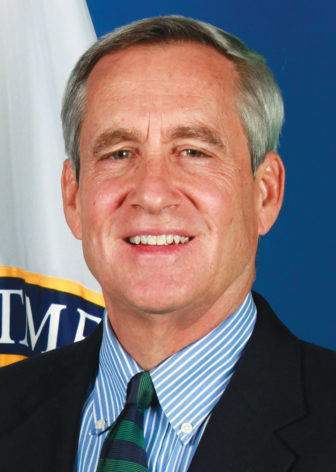 There’s good news and bad news in the report “Indicators of School Crime and Safety 2015,” the most recent in an annual series produced jointly by the U.S. departments of education (ED) and justice (DOJ). Just as important, there’s help available to sustain the good news and tackle the bad.
There’s good news and bad news in the report “Indicators of School Crime and Safety 2015,” the most recent in an annual series produced jointly by the U.S. departments of education (ED) and justice (DOJ). Just as important, there’s help available to sustain the good news and tackle the bad.
The good news is that schools are safer than they have ever been, and that crime in the nation’s schools has declined during the past two decades. Two examples illustrate this recent trend.
- In 2014, students ages 12 to 18 experienced 33 victimizations per 1,000 students at school, a decline of 82 percent from 181 per 1,000 in 1992.
- Between the 1999-2000 and 2013-14 school years, the percentage of public schools who reported bullying occurred at school at least once per week decreased from 29 to 16 percent.
The bad news is that large numbers of students are losing precious instructional time because they are suspended or expelled, especially African- American and Hispanic students. Two examples illustrate these conditions.
- Among students who were ninth-graders in fall 2009, about 19 percent had been suspended or expelled by the spring of their 11th-grade year. Not surprisingly, the percentage of these students who had been suspended or expelled was higher for those who did not complete high school than for those who did complete high school by 2013 (54 vs. 17 percent).
- African-American and Hispanic students are suspended more often than their peers. In school year 2011-12, 6 percent of all public school students received an out-of-school suspension. The rate for African-American (15 percent) and Hispanic (6 percent) students was higher than it was for other racial or ethnic subgroups, such as white (4 percent) and Asian (1 percent) students.
How do we sustain the conditions of good news and turn around those of bad news? First of all, the fact that there is good news is a tribute to the hard work and dedication of educators at every level.
The ED has a number of resources that are free and readily available to educators that can help to sustain these improvements, and reduce suspensions and expulsions. One of those resources is the National Center on Safe Supportive Learning Environments (NCSSLE) at safesupportivelearning. ed.gov. NCSSLE seeks to improve schools' conditions for learning by providing training and support to state administrators, school and district administrators, institutions of higher education, teachers, support staff at schools, communities and families and students.
In regard to reducing suspensions and expulsions, ED and DOJ have released a school discipline guidance package that can assist states, districts, and schools in developing practices and strategies to enhance school climate, with a goal of reducing the number of suspensions and expulsions. The package is available at http://1.usa.gov/1gDTBlO. By taking a positive approach to school discipline, schools can respond to misbehavior in a fair, non-discriminatory and effective manner.
Educators, students and parents face an increasingly complex set of technological and interpersonal challenges to maintain safe and supportive learning environments. I am often asked, “What are the biggest threats to school safety?” My response sometimes surprises people, but I expect it does not surprise youth workers. My answer is that some of the biggest threats to school safety are loneliness, fear and hopelessness. Loneliness can make a young person vulnerable to gang involvement or abusive relationships. Fear can trigger a fight-or-flight response. Hopelessness, perhaps the most perilous of the three, can lead a young person to drop out of school, abuse drugs and alcohol, and even commit suicide.
Youth workers often model the value of building trusting relationships with young people. To do that effectively, one has to find the good in everyone and nurture it, rather than “fix” the “problem” behavior. That is no small feat — one that takes insight and patience.
When one of my daughters was in third grade, I asked her who her favorite teacher had been since kindergarten. After she named the teacher, I asked her why this particular teacher was her favorite. She responded immediately, “Because she believes in everyone.” Those wonderful educators who believe in everyone are making our schools safer and creating positive school environments.
David Esquith is director of the U.S. Department of Education’s Office of Safe and Healthy Students.

Pingback: Kids in the Presidential Campaigns: How the Front-runners Stack Up on Children’s Issues | Youth Today